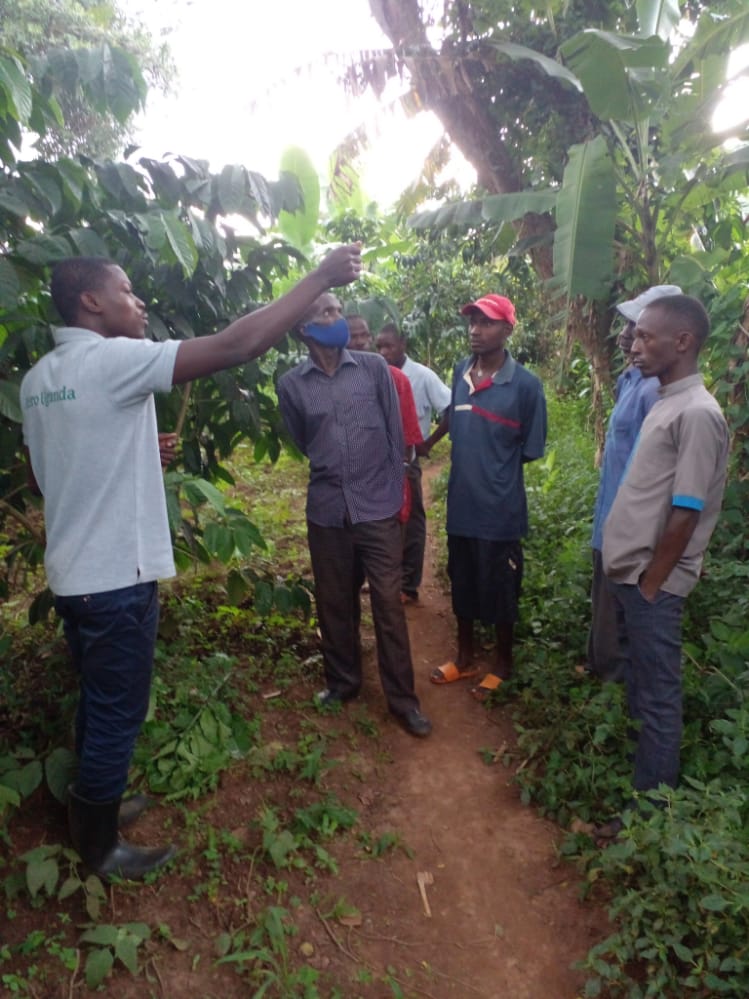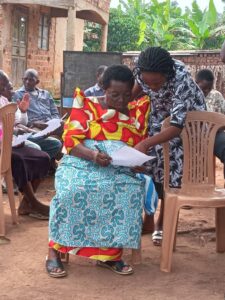 76% of Uganda’s 46 million population lives in rural areas, and most are small farmers. They grow plantains, corn, and beans for food; most grow coffee for income. Approximately 500,000 families depend on coffee production for their principal income (Uganda Coffee Development Authority, 2018). The majority of the farmers produce Robusta coffee, and the Central Region has the highest concentration of Robusta coffee farmers, with 38% of the total.
76% of Uganda’s 46 million population lives in rural areas, and most are small farmers. They grow plantains, corn, and beans for food; most grow coffee for income. Approximately 500,000 families depend on coffee production for their principal income (Uganda Coffee Development Authority, 2018). The majority of the farmers produce Robusta coffee, and the Central Region has the highest concentration of Robusta coffee farmers, with 38% of the total.
SID’s project is located in Luweero District, in the heart of the Central region. Luweero has approximately 13,000 coffee-growing families located in five sub-counties (Butuntula, Luweero, Katikamu, Zirobwe, and Bamunanika), and they are the participants in the program. Their baseline income is $227 a year, but farmers have not had any significant technical assistance in increasing their income. Not only do they have the ability to increase their productivity, processing, price, and income, but many can also increase the amount of land they dedicate to coffee. Farmers can at least triple their income and graduate from poverty.
The major conservation practices are harvesting rainwater by digging water retention ditches and mulching the coffee trees to maintain moisture in the soil.
THE GENERAL POPULATION
In March 2022, farmers in each county began the project by defining the practices they needed to adopt to increase their income from coffee. They agreed upon 32 practices: 10 for increasing productivity, 8 for getting a higher price, 6 for conserving their land, and 8 for making better business decisions.
SID used a random sample to set the baseline for the 13,000 coffee-farming families and to measure their increases in knowledge and adoption of the 32 practices at the end of each project year. Knowledge is quite high, but adoption is taking some time to catch up. (B/L = Baseline)

THE LEADER VILLAGES
At the end of the first year, we increased the number of leader villages from 63 to 127. Farmers can sell their coffee in three ways. Most dry their cherries and sell them to farm-gate buyers, and productivity is calculated in dried cherries. They can also take their coffee to a hulling business, hull it, and earn a 40% increase in price. Farmers that sell their coffee as fresh cherries get the lowest possible price. The increase in income is due to a bad Robusta year in Viet Nam and Indonesia. We aim to get as many farmers hulling as possible so that they get the highest possible in any year.

THE WOMEN
Increases in Personal Growth. We added the women’s program in the project’s second year, and the baseline was one of the lowest possible we have seen. The women use a five-step Likert scale to measure their progress — 0% None; 25% A Little; 50% Medium; 75% A Lot; and 100% Full — and only 10% or lower women considered themselves Medium, A Lot, or Full. However, setting and achieving personal goals and solving common problems did their work, and the women’s numbers rose quickly.

 Increases in Business Growth. 1,145 women started or expanded 28 different types of second businesses. Selling chickens and vegetables were the most popular, but a few had cows and sold cow manure as well as fresh milk, and several more prepared and sold food or made soap and charcoal.
Increases in Business Growth. 1,145 women started or expanded 28 different types of second businesses. Selling chickens and vegetables were the most popular, but a few had cows and sold cow manure as well as fresh milk, and several more prepared and sold food or made soap and charcoal.
All the women made business plans for their second businesses and evaluated their results. The average annual income for all the businesses was $88.